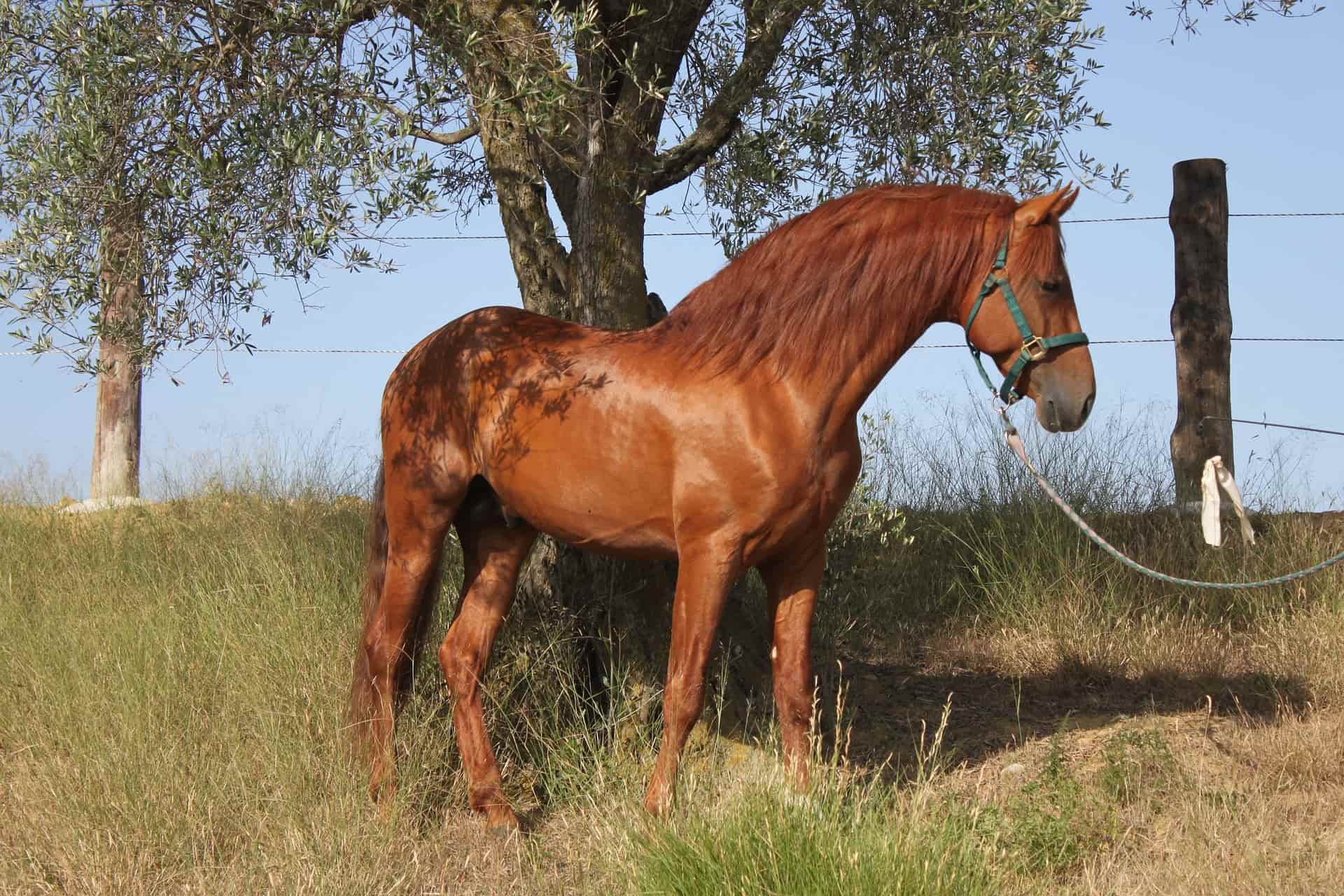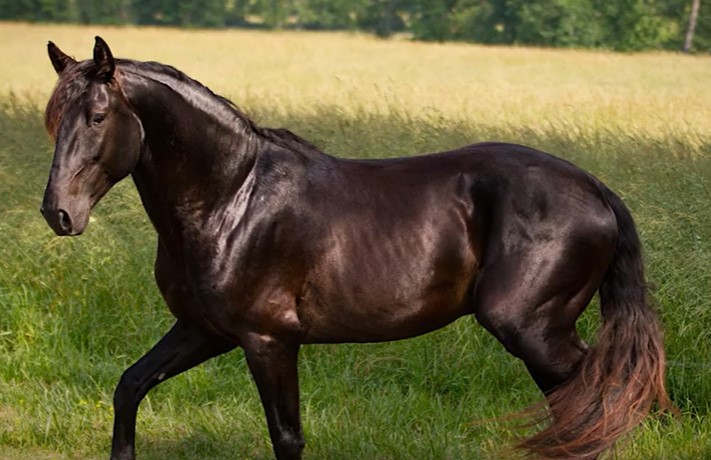The bold, eye-popping, high contrast patches on an American Paint horse have made it one of the most iconic horse breeds around. Identified by its cow-like coat patterns, the American Paint horse gets its name from its markings that quite literally appear as though they were painted on.
But aside from its distinctive appearance, there are a number of other interesting facts that make the American Paint horse a truly noteworthy breed. Want to learn more about this highly coveted horse? Read on to find out some American Paint horse facts you probably didn’t know.
1. American Paint Horses Have the Second Largest Global Registry
One of the most interesting facts about the American Paint horse is their sheer number. As of writing, there are about 1 million registered paint horse individuals in the world today. And according to the American Paint Horse Association APHA, these numbers just keep on growing.
Everyday, the APHA adds about 15,000 American Paint horses to their registry. This makes the American Paint horse the second most popular breed in the world – second only to the American Quarter Horse Association with a whopping 3 million registered horses as of 2014.
But it hasn’t always been that way. Just 50 years ago, there were only about 4,000 American Paint horses registered under the APHA. This also makes the breed the fastest growing horse variety in North America.
2. They Have a Close Relationship to Quarter Horses
In the 1600’s, Spanish explorers set foot on North American soil with their distinct breed of horses. These animals combined genetics from the Barb, Arabian, and Andalusian-bred Spanish horses of the time. But after having set foot on American soil, the horses were inevitably bred with other horse breeds including American Quarter horses and Thoroughbreds.
The resulting horses were born with multi-tone colored coat patterns that made them particularly interesting to look at. But when the American Quarter Horse Association (AQHA) was formed in 1940, they imposed strict rules on how much white a horse could have to be considered a Quarter horse.
Based on regulations set forth by the AQHA a horse with white coloration that extended above and beyond the legs could not be registered as a Quarter horse. So these excessively white-patched horses couldn’t join the AQHA Registry.
Twenty years later in 1962, the American Paint Horse Association APHA was founded with the purpose of giving a name to these unregistered horses and to protecting and supporting the identity of the western stock horse.
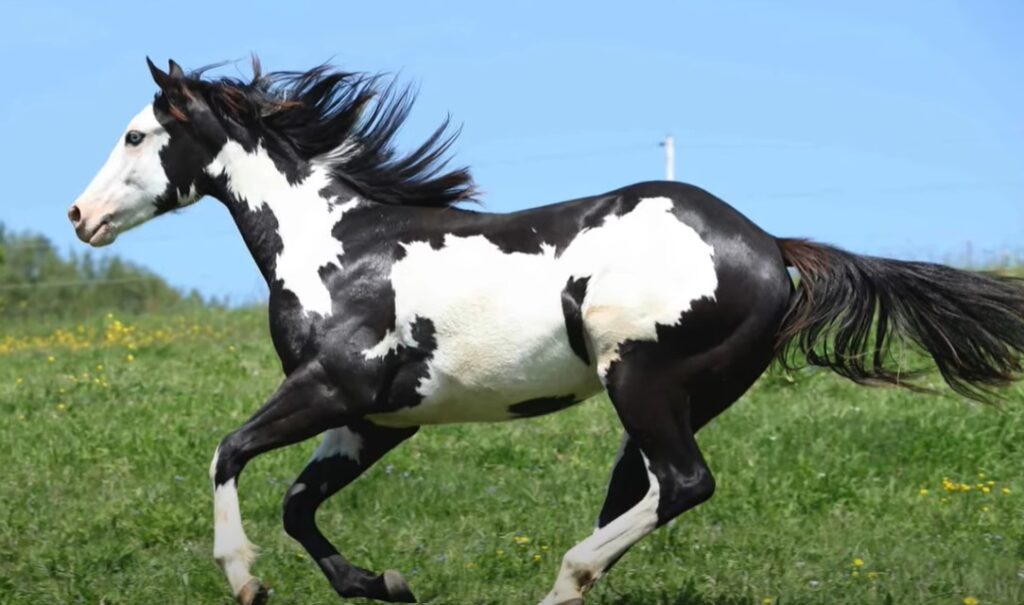
3. Not All Paint Horses are American Paint Horses
That patchy coat color that Paint Horses display isn’t the only thing that identifies the breed. In fact, after the establishment of the APHA, the Paint Horse enthusiasts behind the Association put up their own guidelines to help horse owners identify a true American Paint horse from just any other horse.
Here are the requirements for American Paint horse registration:
Its parents must be registered
Although the animal in questions’ parents don’t have to be registered paint horse individuals, they must be registered with one of the following: (1) American Paint Horse Association, (2) American Quarter Horse Association, (3) Jockey Club.
It should carry Paint pattern genes
Here’s a slightly more complicated requirement. The APHA offers lab testing for hopeful horses that want to join their registry. These tests identify the presence of genes that translate to the Paint pattern in possible offspring.
The genes include: Tobiano; Frame Overo; Sabino 1; Splash White 1, 2,or 3; Dominant White 5, 10 or 20. Keep in mind that not all labs are accredited by the APHA. If you want to get your horse tested, you’ll have to visit either the University of California–Davis or Etalon Diagnostics.
It should manifest the qualities of an American Paint horse
It should manifest the qualities of an American Paint horse – The American Paint Horse Association has quite a strict list of qualities that your horse must possess in order to qualify as a true blue American Paint horse. These include:
- White legs markings above the knees
- Apron or bald face
- White markings on the jaw and lower lips
- Blue eyes
- Blue zone surrounding a natural Paint marking
- Two-tone mane, with one of the colors being white
- Freckles or dark spots on white hair on the face and/or legs
- White areas on a non-visible zone
- Contrasting patches of any other color on a non-visible zone
4. A Paint Horse Can Surprisingly Have a Solid Coat
Most of the time, the tobiano and overo genetics produce the solid coat color. But any combination may manifest the seemingly spotless coat in a foal.
It’s worth mentioning that some solid paint breeds can still become registered Paint horses given that they match the criteria for genetics. As long as the sire and dam are appropriately registered under the Associations listed above, and the horse carries any Paint gene, it can join the registry.
That’s because it is possible for Paints to showcase solid colored coats depending on their genetic expression. Thus, horses that carry Paint genetics and come from a determined Paint lineage are called ‘breeding stock paints’.
Although there are restrictions in just how far solid colored horses can go in terms of competition and show, there are recognized paint breed shows that still allow these varieties to join despite their distinct colors and markings.
5. A Paint Horse Can Also Register as a Quarter Horse
It’s true. Because both American Paint horses and Quarter horses share a close genetic lineage, it’s possible for a horse owner to register their Paint horse to more than just the APHA.
According to the AQHA, a horse must have one of the following dam/sire combinations in order to qualify for registration:
- Appendix horse bred to Quarter horse
- Thoroughbred to Quarter horse
- Quarter to Quarter horse
Keep in mind though that the parents must be registered with the appropriate registry if the foal should ever be considered for AQHA registration.
The AQHA also has very stringent rules when it comes to markings, so just the lineage won’t always get your horse registered with the AQHA. Interestingly though, some horses have just enough white to get away with triple registration.
Case in point – Living Large, a registered Paint horse that was also registered as a Quarter horse and a Pinto horse.
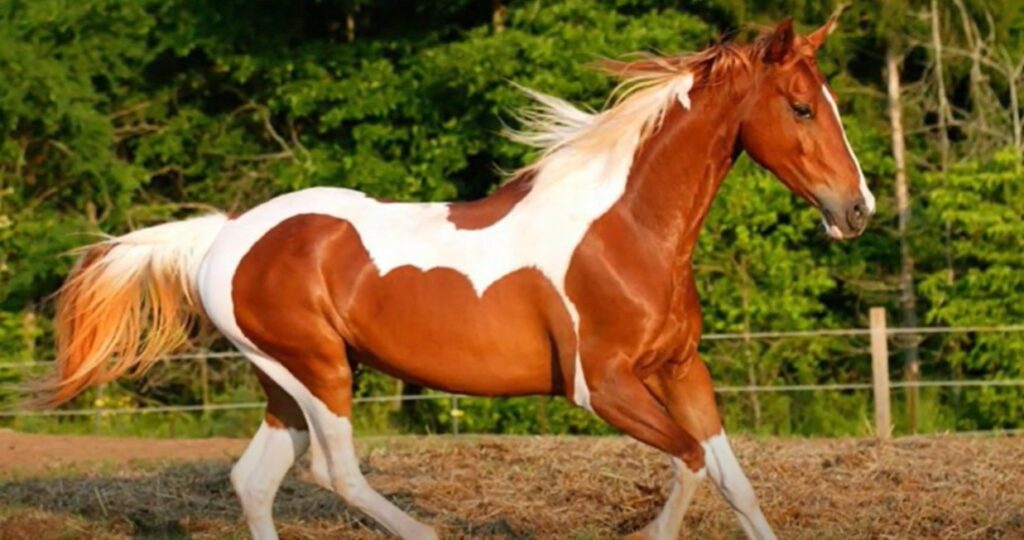
6. All American Paint Horses are Pinto Horses
But not every pinto is a Paint. A lot of people use the terms ‘Paint horse’ and ‘Pinto’ interchangeably, thinking they refer to the same thing. But that’s not actually the case. Pinto comes from the Spanish word Pintado which essentially means painted.
Thus the word pinto actually refers to a colorway or pattern that many different breeds of horses demonstrate. That means the word pinto refers to a color breed and not actually a true breed of horses.
The American Paint horse is one of the most popular pinto horse breeds. But there are many other breeds that showcase the pinto pattern. There’s also a separate registry for pinto horses called the Pinto Horse Association of America (PtHA) which registers horses based solely on color patterns and not breed.
7. No Two Paint Horses are the Same
Horse experts have likened the Paint horse coat coloration to a fingerprint. That is, no two fingerprints are ever the same. And the same rules apply for paint horse markings.
Every Paint horse demonstrates unique coat patterns and markings that make it distinct from any other pinto.
8. There are Different Names for Coat Marking Patterns
The pattern of the markings on the American Paint’s coat will determine which category it will fall into. These categories include:
Tobiano
Tobiano horses demonstrate distinct, large patches of color that appear as round areas or ovals. They have a two-toned tail, and most of their legs are typically white. Darker colors usually cover the flanks, neck, and chest, giving the appearance of a shield. They may also have a dark head with very little white coloring.
Overo
When it comes to overo patterns, white coloration does not cross the horse’s back, the withers, or its tail. At least one of its legs should be white. The patches of color appear ‘splashed’ and irregular. They’re often bald or apron faced, possess blue eyes, and their tails typically only have one color. There are two subtypes for the overo – framed overo and splashed white overo coloration.
Tovero
A combination of tobiano and overo, Tovero horses are almost nearly all white. Pigmentation usually occurs around the ears, down the neck, and over the chest, appearing in the shape of distinct ovals. They may also have colored spots of varying size sitting at the base of the tail and blue eyes.
Recommended: Most Beautiful Spotted Horse Breeds
9. There’s a Genetic Disorder That’s Unique to Paint Horses
The overo lethal white syndrome is an identified genetic disorder that’s associated with the American Paint horse. This autosomal recessive trait can’t be detected during pregnancy, and mares typically carry their foals to term without any problems.
Foals born with overo lethal white syndrome come out with entirely white coloring and blue eyes. They may appear healthy, but die within a few days from birth because of defective or faulty colon functioning.
Because their death may be painful, horse owners often euthanize these solid white horses born with the rare genetic condition.
10. Some Paint Horses Can Be All White
Despite the possibility of the lethal white overo syndrome mentioned previously, healthy, all white Paint horses do exist. Technically speaking, the genetics of Paint horses identify them as colored horses with white spots (it’s featured in our article as one of the best black and white horse breeds). That’s regardless of how large the white areas might be.
Albeit incredibly rare, all white paints may occur when a white color gene matches with a white spotting gene. The white spotting might look identical to the white base color, creating the illusion of a solid colored horse. But even then, a close inspection of the coat will prove that it isn’t a solid color, especially if the white hair shades don’t perfectly match.
Underneath all of that white, these solid colored horses showcase pink skin. And because they have dark eyes, it’s also worth mentioning that they are not albinos.
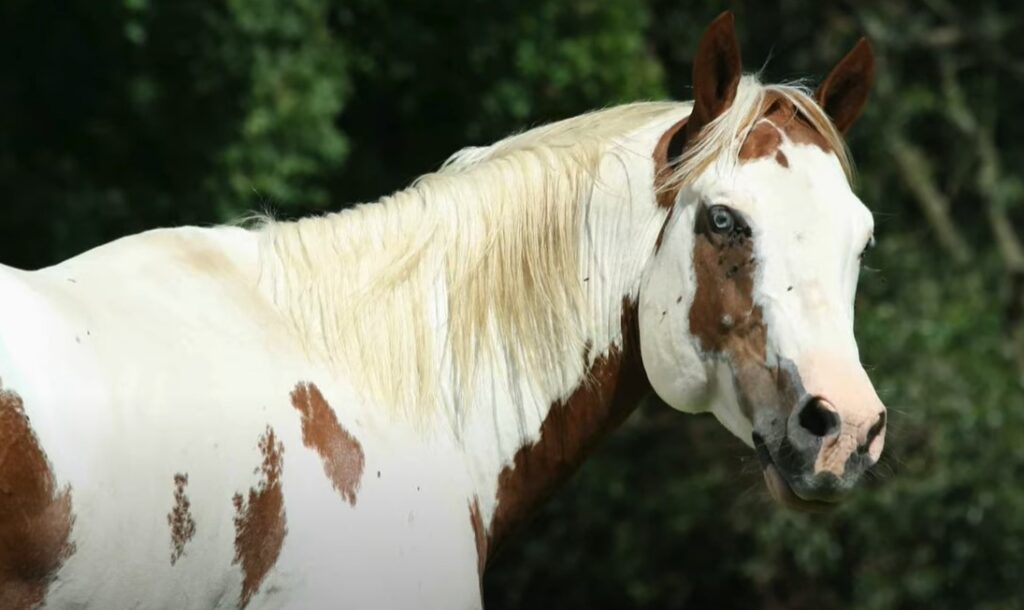
11. American Paint Horses are Docile, Calm, and Intelligent
There’s a lot more to the popularity of Paint horses than just their flashy, colorful coat. These horses are some of the calmest breeds you’ll find. Establishing a strong bond with its owner, the Paint horse learns quickly and demonstrates patience and calmness that many other horses fail to showcase during training and riding.
For this reason, the American Paint is often the breed of choice for first time horse owners hoping to learn the ropes and work with a horse that won’t put up a fight.
12. They Shine in Competition
Because of their intelligence, the American Paint horses compete in a variety of disciplines. The American Paint Horse Association organizes events in every area, including halter, showmanship, English, trail riding, barrel racing, horse racing, Western events, and many other equine events.
Athletic and agile, Paint horses also do particularly well in various equine sports. Lots of Paint horses have taken home gold medals from showjumping thanks to their powerful, sturdy built, and graceful form.
See some more great breeds for barrel racing, and the top dressage horse breeds.
13. But They’re Also Great for Pleasure Riding
Once a paint horse gets used to its owner, it’s likely to form a strong bond with its human. This makes the animal much easier to handle because of their gentle, loving nature. For this reason, Paint horses make wonderful companions for trail riding and pleasure riding.
Patient and intuitive, these animals will instinctively adjust to your riding capabilities and experience so you can enjoy a calm, comfortable ride even on rough, rugged terrain.
14. They’re a Versatile Breed
If you were more interested in finding a work horse for your ranch, the American Paint still delivers. Many owners enjoy their Paint stallion for working cattle. Its powerful, well balanced body gives it great endurance for laborious tasks under the heat of the sun.
A Horse for All Seasons
Whether you’re looking for your next horse racing winner or a calm companion around the ranch, you can never go wrong with the American Paint horse breed. Beautiful, intelligent, versatile, and strong, this horse breed showcases skill and talent in virtually every discipline of horse competition and humble ranch performance.
The Paint horse breed has been around for centuries, and for good reasons. Beloved by Spaniards, Native Americans, and modern day cowboys, these American paint horse facts prove just why the horse breed has become the second most popular variety across the globe today.

